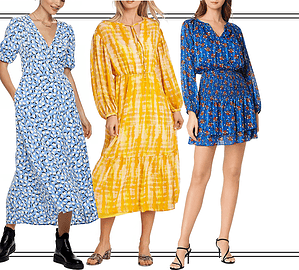Gone are the days of the boombox-on-hip balancing act and the cumbersome cords of first-generation cellular phones. Indeed, the world of technology is now inextricably linked to the fashion industry, and most of this phenomenon can be attributed to better portability of electronic devices. Both smartphones and tablets are attractive, superbly portable, and are an iconic symbol of affluence and overall good taste. Let’s take a closer look at five unique ways that fashion and technology seamlessly intersect and serve as a testament to modern consumer culture.

1. The Cover Has It
While fanny pack-style cell phone holders, or holsters, are certainly passe, the mere presence of a tablet or smartphone in hand sparks individuality and confidence. Electronic devices are commonly adorned with everything from vinyl stickers for the back of the device to fashionable BodyGuardz smartphone cases and everything else in-between.
2. Social Media Influence
Major social networking sites provide the everyday user with a heightened knowledge of the major trends in the fashion industry. No longer are consumers reliant on monthly fashion magazine subscriptions or look books to gather a strong sense of current and upcoming trends. A simple scroll down a user’s Instagram feed is more than a mindless pastime or satiation of one’s content cravings. Instead, each image is a contributor to a cultural collage.
3. The Innovative Product
With portable, wearable technology comes the need for stylish items that serve the dual purpose of aesthetics and functionality. Currently, wearable tech devices, such as Apple’s Smartwatch, are limited in function and must be accompanied by the full-sized product. However, smart fabrics, which can turn on technology at the flick of a wrist, are a reality in the not-too-distant future. Such technology places more functionality in the hands of the fashion product itself.
4. The Rise of the Virtual Studio
With the increase in the availability of online education, it’s easier than ever for students to learn about fashion and create/share the future of fashion through online portals used for classroom collaboration. No longer are students confined by borders since online learning promotes a rapid-fire cultural exchange for international students.
5. Greater Accessibility Overall
Fashion trends are perhaps more widespread than ever before, thanks to the capabilities of the internet. Cable television and its on-trend channels, such as MTV and VH1, were coveted by young adults nationwide before blogging, vlogging, and cable-free television access staged the ultimate takeover. Mobile commerce runs rampant with fashion-forward trends at consumers’ disposal 24/7. Credit, debit, PayPal, and vouchers offer seamless and quick payment options, and statistics show a major preference for online shopping over the traditional brick-and-mortar shopping experience. Indeed, the proof is in the pudding, so to speak. Malls are closing. Major names in retail are shuttering their doors, signifying a new generation of consumers who know what they want, sans the bravado.
Thanks to the rapid exchange of information through the internet, almost every individual understands the significance of trends, regardless of culture or socioeconomic status. The lines are blurring, and hopefully the integration of fashion and technology ushers in a new era of conspicuous consumers who are no longer stigmatized. Free, unrestricted exchange of content across platforms keeps everyone better informed as consumers and promotes a larger market of competitors overall.



